|
|
|
from ReligiousTolerance Website
by Alexander Duncan
B.A. (Hon.), York University from ReligiousTolerance Website
PART 1
Editor's Note
Aleister Crowley (1875-1947) contributed greatly to the "magical revival," as it has been called, during the first half of the 20th Century.
His written works have
had a profound effect on the practice of Magick. In addition,
Satanism, as currently practiced by the Church of Satan and similar
groups, have relied heavily on a sensationalistic interpretation of
his writings.
There are even marks of his influence in the writings
of Gerald Gardner, the individual most responsible for the
recreation of Wicca circa 1950.
The Christian church invented it in order to provide the theological and legal justification for the Witch burnings of Western Europe.
Because of this association, most of the writings by Fundamentalist
and other Evangelical Christians about the Law of Thelema and
Crowley are hopelessly inaccurate, and may be safely ignored.
Permission to copy, reproduce, or distribute this material
is freely granted provided there is no charge and the name and
e-mail address of the author is included in every copy.
Aiwass proceeded to demonstrate his objective existence independently of the psyches of both Crowley and Rose, by leading them to the stele of Ankh-af-na-khonsu, a Theban Egyptian priest of the 8th century B.C.E., in the Boulak Museum, where they had never been.
He then dictated a sacred text to Crowley called The Book of The Law.
For five years thereafter Crowley resisted the Law of Thelema and the mission of Thelemic prophet laid upon him by Aiwass, regarding the Cairo Working, as it is called, as an "astral vision" (i.e., a purely imaginative – but not "imaginary" – experience).
However, Crowley's subsequent attainment of the grade of Master of the Temple in the Supreme College of the Great White Brotherhood resulted in his acceptance of the Law of Thelema and of his own prophetic role as described in the Book of the Law.
Crowley proclaimed himself as the prophet of a new eon for
humanity for the first time in his long mystical poem, Aha! (1909),
which has been compared in beauty and profundity to the
Bhagavad-Gita. Thereafter he signed his correspondence and formal
instructions with the two main slogans of the Book of the Law, "Do
what thou wilt shall be the whole of the Law" and "Love is the law,
love under will."
Many of these formal instructions were published during his lifetime in his Equinox periodical and elsewhere.
Crowley believes that the Law of Thelema resolves all
spiritual quandaries, harmonizes science and religion, and
supersedes all historical dispensations, establishing a new cultural
epoch for humanity, which he calls the New Aeon of Horus, the
Crowned and Conquering Child. According to Crowley, the New Aeon
will endure for at least several hundred years, possibly for as long
as two thousand years.
Crowley lost many followers due to his troublesome personality and libertine lifestyle, especially after he came to the attention of the British tabloid press following the First World War.
After his death, Crowley left behind him
a disorganized and demoralized O.T.O. movement which has since split
up into several competing factions, notably the American Caliphate
founded by McMurtry, the Swiss O.T.O. founded by Metzger, the
English O.T.O. under the leadership of Kenneth Grant, and a
Brazilian O.T.O. founded by Marcelo Ramos Motta. A very few members
of the original A. ..A. .. also carried on the work in a very
limited way, but the A. ..A. .. organization qua organization did
not survive Crowley, at least not openly.
Today the Law of Thelema has attracted several thousand adherents worldwide, as well as a larger following of curiosity seekers, including several prominent rock stars. The Law of Thelema has a strong presence on the Internet, and many of Crowley's writings are available online.
Crowley first editions are in demand,
and fetch high prices in the rare book market.
At the time, Crowley interpreted the Cairo Working as an astral vision.
At this time, Crowley was a Minor Adept of the Hermetic Order of the
Golden Dawn. The Golden Dawn
Thus, at the time of the Cairo Working Crowley was
an advanced experimental occultist in his own right, although Rose,
who was pregnant with their only child, had no experience as a
clairvoyant. Crowley was also a published and fairly well known
minor poet of controversial verse, yogi, world-class traveler and
mountaineer, pornographer, drug taker, and wealthy libertine.
Crowley reacted against this fundamentalist and evangelical upbringing but his interest in religion, which, despite his promiscuous lifestyle, was serious and sincere, persisted. Because of his wife's and his contact with Aiwass, Aiwass dictated to Crowley a sixty-five-page document, called the Book of the Law, in length about equal to Lao-tse's Tao-te ching.
Crowley came to regard the Book of the Law as having nothing whatever to do with himself, despite the similarity of style and sentiment to Crowley's previously published writings (despite these similarities, the Book of the Law is also very different, being far more disorganized and ecstatic than anything Crowley produced before or after, and referring to events in Crowley's future that subsequently occurred).
During this dictation Crowley "saw" Aiwass,
who appeared as an Assyrian or Persian aristocrat with veiled eyes.
Crowley also stated that Aiwass' English was devoid of any accent.
The Book of the Law is both a radical
postmodernist critique and an endorsement of religion, which claims
to go beyond all previous historical dispensations and reveal to
humanity nothing less than the basis of a new spiritual epoch, the
New Aeon of Horus, the Crowned and Conquering Child.
In the Thelemic exegesis,
Horus represents the inauguration of a new spiritual way, which will
be preceded by a transitional period of unprecedented disaster and
suffering (Set), in the very beginning of which we are now (Crowley
believed that this period would last several centuries, and would
ultimate in the destruction of Judaeo-Christian civilization, which
he identified with Osiris, the Dying God).
The word "Thelema" is derived from the Greek θελημα, meaning "will," and is believed to conceal various symbolic allusions in the letters and their numerical values (like Hebrew and Arabic, Greek letters are also numbers).
Will is preeminently, however, not free, but true,
thus raising the Law of Thelema above simple libertarianism.
The A...A... is a temporal manifestation of the Great White Brotherhood, and not necessarily the only one, one of the three fundamental spiritual schools of humanity, the others being:
The Black Brothers are at odds with all true spiritual schools, and seek to dominate the human race, subjecting them for their own purposes.
They are closely associated with the exoteric systems based on priest craft and rules, which almost completely reject the pursuit of personal spiritual experience in favour of a rule-based ethic of obedience, conformity, and vicarious salvation.
The Black Brothers interfere with human history in pursuit of their own agenda, precipitating wars, chaos, and social strife, promoting authoritarianism, materialism, rationalism, industrialism, urbanism, scientism, and collectivism, and repressing all authentic spirituality in the pursuit of global domination and the subjection of the human race.
The White School is also involved in human history, much more so than either the Black or Yellow Schools, which avoid worldly involvements.
Many of the greatest historical spiritual teachers, as well as many artistic and scientific geniuses, have actually been Secret Chiefs of the Great White Brotherhood, who have entered into incarnation in order to help guide humanity towards the realization of the ultimate goal, the attainment of universal enlightenment.
Aleister Crowley himself
claimed to be a Secret Chief of the White School, and not a Black
Brother, although in a moment of pique he described himself as a
"black magician."
The ten main grades correspond to the
Cabalistic Tree of Life, a diagram that represents the
correspondence between macrocosm and microcosm, reality and
consciousness.
However, unlike the A...A..., these grades are
ritually conferred in the style of Freemasonry and correspond to
increasing degrees of intelligence not tied to actual magical or
mystical tasks or attainments.
This means that Thelemites engage in various spiritual practices in order to realize the truth of the spiritual life in and for themselves. The ultimate goal of the spiritual life is to identify with and actually become a spiritual being, free of the constraints and constrictions of conditioned existence. The state of being a spiritual being is an ecstatic, powerful state of union with everything (Thelemic "compassion").
The Law of Thelema also teaches that all religions are variations of one fundamental underlying spiritual truth, which become fragmented into different religious traditions as a result of variations of place, time, and degree of realization and mutual isolation and hostility as, with the passage of time, religions become increasingly diversified and exclusive.
Religions thus harden into increasingly exoteric systems, based on devotion to priest craft and rules, in which individual spiritual experience is increasingly repressed in favour of an official orthodoxy, ultimately the prerogative of the Black Brothers, which becomes increasingly metaphorical and vicarious.
Thus, the Law of Thelema rejects "religiosity" altogether, and actively seeks to destroy it, since the religious attitude in this sense is harmful to the spiritual life and impedes, blocks, restricts, and interferes with real spiritual progress.
Consequently, Thelemites incorporate practices from all religious traditions without distinction, in order to reconstitute the primordial tradition that underlies them all. Crowley compared this process to recombining the colours of the spectrum into white light.
This reconstruction is the special task of Scientific Illuminism,
which is one aspect of the Law of Thelema, the operative branch of
which is Magick.
Many of these tasks and attainments have become the special study of parapsychology and transpersonal psychology in recent years. In the system described by Crowley, these are the main attainments of the Outer Order (collated from the three main documents describing these attainments, Liber XIII, Liber CLXV, and "One Star in Sight"):
The work of an aspirant to the A...A... is so subtle and advanced that it is beyond the ability of most people, although a few aspirants attained high grades in the A...A... during Crowley's lifetime.
The tests, some of which are published, which Crowley applied to aspirants in order to qualify were very stringent, and Crowley did not grant grades casually.
For
example,
During his lifetime, this secret was zealously guarded, although it is not always discreetly hinted at in the esoteric literature of the day and by Crowley himself.
However, since Crowley's death the cat has long been out of the bag. The Supreme Secret of the O.T.O. is nothing other than the use of sex in the pursuit of spiritual enlightenment, equivalent in fact to a Western Tantra. Sex is, of course, the single most powerful psycho-physiological energy in man, so pressing it into the service of spiritual development is a natural evolution, once one overcomes the restriction of shame.
From the Tantric point of view, sexual abstinence is really a form of "sex magick," so-called, since sexual abstinence modifies the sexual instinct.
Exotericism sees in sexual abstinence the rejection of sexuality per se as contrary to the spiritual life, but the Tantric view is more subtle and profound. Rather than rejecting sex, the Tantric practitioner seeks to sublimate the sexual energy, inhibiting its outflow so that the energy accumulates in the brain, its original source, where it induces the state of illumination (the physiological precursor of enlightenment).
Once
one realizes that this is how sexual abstinence actually works, the
possibility of a contrary methodology presents itself to the
discerning consciousness. Instead of repressing the sexual energy,
one can intensify it to the point where the sheer excess of sexual
arousal causes the energy to ascend the spine and, once again,
"illuminate" the brain. In the latter case, however, the body is
also "illuminated." Thus, the formulae of sexual abstinence and
orgiastic excess are realized to be essentially identical,
variations of the same underlying energy-economy.
This is especially true of the followers of
Kenneth Grant (image right), who has created a system of Thelemic attainment
strongly suggestive of Vodou, the primal religion of Africa and
humanity, since, according to current archaeological research,
humanity originated in Africa.
These include (based on the Official Publications of the A...A...:
In addition to the foregoing, members of the O.T.O. observe the Gnostic Mass (see Liber XV - Ecclesiae Gnosticae Catholicae Cannon Missae), in which the Supreme Secret is rehearsed and an eucharist consumed by the celebrants, and various visualization practices.
The Book of the Law also refers to the spiritual use of drugs, which informed the spiritual practice of many significant spiritual teachers before their criminalization, including Georges Ivanovitch Gurdjieff (according to Timothy Leary), Julius Evola, Aldous Huxley and others.
Drugs are also an integral part of many different South American aboriginal shamanic cultures.
The traditional cultures of
the Quiches, Incans, Mayans, and Aztecs bears many striking
affinities to the Law of Thelema, more so even than Africa.
Subsequently he underwent an experience, called the "ordeal of the abyss," similar to the "dark night of the soul" of the mystics, in which he completely annihilated his human personality and achieved an extreme state of "psychic opening."
He became completely open and receptive to the influx of the divine consciousness, an intense, intuitive, transrational, and ecstatic state of self-perfection and realization of reality in its fundamental and ultimate aspects.
In this state, intermittently over a period of five years, Crowley wrote a series of books, ranging in length from several hundred to several thousand words, concerning which he declares that they are beyond rational criticism, i.e., absolutely and indubitably true. These books were written "automatically," i.e., without rational reflection, in a state of trance.
These works constitute the revelatory foundation of the Law of Thelema, and are referred to, including the Book of the Law, as the Holy Books of Thelema.
In order of writing, they are:
In addition to the foregoing, Crowley wrote (or, rather, dictated to his disciple and lover, the poet Victor Neuburg, in an ASC) The Vision and the Voice.
The Vision and the Voice (properly, Liber XXX Aerum vel Saeculi) is a series of visions based on the Enochian magical workings of famed Elizabethan scholar John Dee and his skryer Edward Kelley, to which Crowley traces the beginning of the process culminating in the advent of the New Aeon in 1904 e.v. Crowley claimed to be Edward Kelley's reincarnation.
All but the first two visions were received in the Sahara Desert in 1909 e.v., to which he ascribed a combined classification, viz., A-B, Class 'A' being a "holy book" as discussed above, and Class 'B' an ordinary work of rational scholarship.
A prefatory note to The Treasure House
of Images, published in The Equinox in 1910 e.v., was assigned the
'A' classification. Liber NU and Liber HAD also contain instructions
received directly from V.V.V.V.V., Crowley's motto as a Master of
the Temple of the A...A..., which are presumably also Class 'A,'
since V.V.V.V.V. corresponds to Crowley's neschamah, the soul in its
static aspect.
Most Thelemites today follow Crowley's lead in interpreting The Comment to mean that no one may publicly interpret the Law of Thelema, and that those who do so are to be shunned, despite the fact that the prohibition is only applied to the text of the Book of the Law itself, and not any other holy book.
Consequently, little critical literature on the Law of Thelema (as distinct from biography) has appeared since Crowley's death in 1947 e.v., the only notable exception being the writings of Kenneth Grant (most importantly, The Magical Revival, Aleister Crowley and the Hidden God, and Hecate's Fountain).
However, Grant and his followers are shunned as heretics by many Thelemites, especially the followers of the American Caliphate, who accuse him of collaborating with John Symonds. Symonds, who many Thelemites believe exploited the "old man" for personal profit and gain by hypocritically maneuvering himself into the position of Crowley's literary executor, is the author of several extremely hostile biographies of Aleister Crowley, as well as the co-editor with Kenneth Grant of a number of Crowley's writings.
In his final Crowley biography, King of the Shadow Realm, Symonds claims that Crowley was actually psychotic (similar
assertions are sometimes made about Carl Gustav Jung as well, and
are clearly ideologically motivated).
Except the Book of the Law, the Holy Books of Thelema represent the high water mark of Aleister Crowley's literary career for sustained philosophical sublimity, lyric and symbolic beauty, and structural elegance.
Often obscure, they are nevertheless potent and profound testaments to the ecstatic integrity of Aleister Crowley's spiritual realization.
(Even although Crowley had not crossed the abyss when Aiwass revealed the Book of the Law, he classifies it as an holy book because it represents the dictation of Aiwass himself, who holds the rank of Ipsissimus, i.e., the highest possible grade.
Crowley himself only attained this grade seventeen years later, in
1921 e.v., at which time he and Aiwass became one being: thus the
relationship with the Holy Guardian Angel represents in the Thelemic
view a kind of spiritual marriage).
Accepting the Law of Thelema is itself such an act of coordination or alignment with the cosmic cycle known as the precession of the equinoxes. Crowley implies that the New Aeon of Horus, the Crowned and Conquering Child, which began with the self-revelation of Aiwass at the Vernal Equinox, 1904 e.v., corresponds to the advent of the astrological Age of Aquarius.
By
aligning one's personal life with the universal life mediated by
these cycles one becomes a vehicle of the manifestation of the
universal life, thus making oneself a channel of higher spiritual
forces which in turn accelerate one's natural spiritual evolution
and affect the karma of the planet.
All these times are celebrated by means of rituals, in which energy is generated, and feasts, in which energy is both discharged and absorbed.
In addition, Aiwass' directs that the birth, puberty, and death of Thelemites and their children are to be celebrated.
Many Thelemites also observe the "quarter-days" of the Wiccan religion, viz.,
Finally, the Book of the Law alludes to a mysterious
feast of Tahuti, which has never been satisfactorily explained.
These accusations generally resolve themselves into seven basic assertions: that he was a pornographer, traitor, sexual deviant, sado-masochist, womanizer, drug addict/alcoholic, or even psychotic.
Each of these accusations can be discussed in the context of the evidence. It is certainly true that Crowley,
Strictly speaking, however, the truth or falsehood of any of these claims is unrelated to the truth or falsehood of the Law of Thelema, just as the truth or falsehood of the Tractatus Philosophicus is unrelated to the fact that Wittgenstein was an homosexual.
As every first year philosophy student learns, truth or falsehood is not a moral quality or a function of the personal psyche, and it is quite possible for a morally mean or even psychologically dysfunctional person to experience and express insights that are both beautiful and true. The history of Western civilization provides numerous examples, many of whom are studied in universities.
Crowley himself regards the pursuit of spiritual realization as a science, in which moral considerations are either secondary or entirely irrelevant. Crowley himself writes,
Philosophically, then, Aleister
Crowley is an amoralist.
A Thelemite who knows his True Will can however guide others in
accordance with universal principles, but the relationship should
not be one of imitation. If Aleister Crowley violated his own or any
other individual's True Will at any time, he simply violated his own
law and paid the karmic price, but this does not invalidate the Law
itself.
The imitative tendency, which Crowley despised, is deep. Since imitating the moral example of a founder is not the ethical teaching of the Law of Thelema, every Thelemite is free to imitate Aleister Crowley's personal lifestyle or not as they choose, although Crowley himself advises against it, warning that those who try to do so will be possessed or obsessed by the "vision of the demon Crowley" (Crowley, who was an amateur artist, even drew a sketch of this particular demon).
Unfortunately, as the history of the Law of Thelema shows
with great clarity, Crowley's advice was accurate, and numerous
heedless Thelemites have been devoured as a result.
Aleister Crowley was a storm,
which may yet sink the ship of the Judaeo-Christian civilization
that he despised.
from
ReligiousTolerance Website
The religion known as Thelema was founded in 1904 by the English poet and mystic Aleister Crowley (1875 - 1947), who is regarded as its prophet.
Those who follow the
path of Thelema are called Thelemites.
The contents of this book are rather cryptic, and Crowley has prepared a number of commentaries thereto for clarification (3).
Thelemites are expected to interpret the book for themselves, based on Crowley's commentaries and other writings; but are enjoined from promoting their personal interpretations to others.
Another book which forms an important part of the Thelemic canon, but which is not included in The Holy Books of Thelema for technical reasons, is Liber XXX Aerum vel Saeculi, sub figura CDXVIII, commonly called The Vision and the Voice (11).
The I Ching and the Tarot (considered as
a book of mystic illustrations rather than as a fortune-telling
device), though of Pre-Thelemic origin, are also considered to be
part of the informal Thelemic canon.
These notes are not intended as
interpretation or commentary on The Book of the Law outside the
bounds of the Prophet's writings, nor do they
The interplay
of these Principles gives rise to the Principle of Consciousness
which governs existence. In the Book of the Law, the divine
Principles are personified by a trinity of ancient Egyptian
Divinities: Nuit, the Goddess of Infinite Space; Hadit, the Winged
Serpent of Light; and Ra-Hoor-Khuit (Horus), the Solar, Hawk-Headed
Lord of the Cosmos.
Each individual is also considered to
have his or her own personal "Augoeides" or "Holy Guardian Angel";
which can be considered both as the "higher self" and as a separate,
sentient, divine being. With respect to concepts of the afterlife,
life itself is considered as a continuum, with death an integral
part of the whole. Mortal life dies in order that mortal life may
continue. The Augoeides, however, is immortal and not subject to
life or death.
The previous Aeon was that of Osiris, and previous to that was the Aeon of Isis. The neolithic Aeon of Isis is considered to have been dominated by the Maternal idea of divinity, and its formula involved devotion to Mother Earth in return for the nourishment and shelter She provided.
The Classical/Medieval Aeon of Osiris is considered to have been dominated by the Paternal Principle, and its formula was that of self-sacrifice and submission to the Father God.
The modern Aeon of Horus is considered to be dominated by the Principle of the
Child, the sovereign individual; and its formula is that of growth,
in consciousness and love, toward self-realization.
The "acceptance" of
the Law of Thelema is what defines a Thelemite; and the discovery
and accomplishment of the True Will is the fundamental concern of
all Thelemites. Achieving the "Knowledge and Conversation of the
Holy Guardian Angel" is considered an integral part of this process.
The methods and practices to be employed in this process are
numerous and varied; and are grouped together under the generalized
term "Magick".
Some of these practices are the same as, or similar to, the practices advocated by many of the great religions of the past and present; such as prayer, meditation, study of religious texts (those of Thelema and of other religions as well), chanting, symbolic and initiatory ritual, devotional exercises, self-discipline, etc.
However, some of our practices have been traditionally associated
with what has generally been known as "occultism"; i.e., astrology,
divination, numerology, yoga, tantric alchemy, and discourse with
"angels" or "spirits" are all taken by Thelemites as potentially
effective means for obtaining spiritual insights into the nature of
one's being and one's place in the universe; and for the fulfillment
of such insights through harmonious, evolutionary works.
This includes acts of interference with any other individual's lawful exercise of their right to discover and accomplish their own True Will. Thelemic doctrine holds that the disharmony and imbalance created by such actions results in a compensatory, equilibrating response from the universe; a doctrine similar to that of the Eastern conception of "Karma".
Thelema has no direct parallel to the
Judaeo-Christian concept of the devil or Satan; however, a
pseudo-personification of confusion, distraction, illusion and
egotistical ignorance is referred to by the name "Choronzon".
Both
are zero-based, with nonzero numbers being represented as upper and
lower case Roman numerals, respectively. So, for example, the civil
year 1996 is (after March 20) Thelemic year IViv, because 1904 + (4
* 22) + 4 equals 1996.
The specific dates attributed to them are given in Crowley's commentaries, and are summarized below:
Three points of passage in the life of each Thelemite are observed.
Various anniversaries commemorating
major events and figures in the history of Thelema and O.T.O. are
also celebrated informally by some Thelemic groups.
Most Thelemites also practice a particular form of prayer four times per day, which is specified in a book called Liber Resh vel Helios [Included in Ref. (1)].
Thelemites often take mystic names or "magical mottoes" for themselves as a sign of commitment; and customarily greet each other with the phrase, "Do what thou wilt shall be the whole of the Law"; to which the customary response is, "Love is the law, love under will".
Sometimes these phrases are abbreviated by the simple
statement of the number "ninety-three", which number signifies both
"Will" and "Love" through a particular form of numerology of
significance within Thelema.
O.T.O. currently operates in 17 countries around the world and has approximately 3000 active members.
Within the broad context of Thelema, O.T.O. functions as a
fraternal, initiatory, social, and educational organization of a
religious nature.
Members of O.T.O. in good standing are eligible for clerical ordination in E.G.C. Members of II° and higher (or even I°, in some situations) are eligible for ordination as Deacon, and those who have reached K.E.W. are eligible for ordination as Priest or Priestess. E.G.C. also celebrates seasonal festivals, commemorations of life passage events and other religious functions.
Many O.T.O. local bodies celebrate the Gnostic
Mass on a regular basis, and in most locations, no formal
affiliation is required to attend the Mass.
Although they are distinctly separate organizations, O.T.O. has historically assisted AA with practical matters that lie outside its primary mission, which is purely spiritual in nature.
Aspirants to the AA may write to:
REFERENCES
|

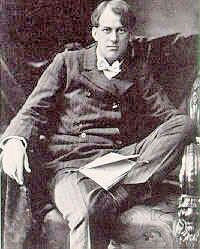
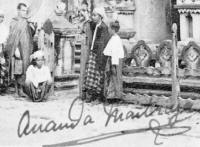
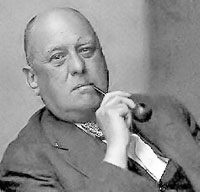 one has to "astral travel" through an abstract symbol that
one has never seen before and describe a vision the character of
which is consistent with the symbol's meaning in order to pass the
test for "rising on the planes."
one has to "astral travel" through an abstract symbol that
one has never seen before and describe a vision the character of
which is consistent with the symbol's meaning in order to pass the
test for "rising on the planes." 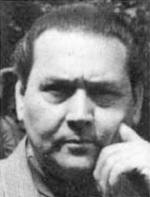
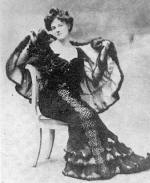
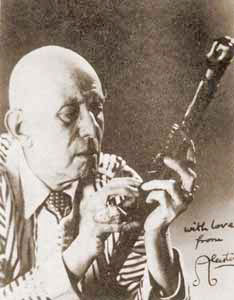 represent a definitive
statement of Thelemic belief.
represent a definitive
statement of Thelemic belief.